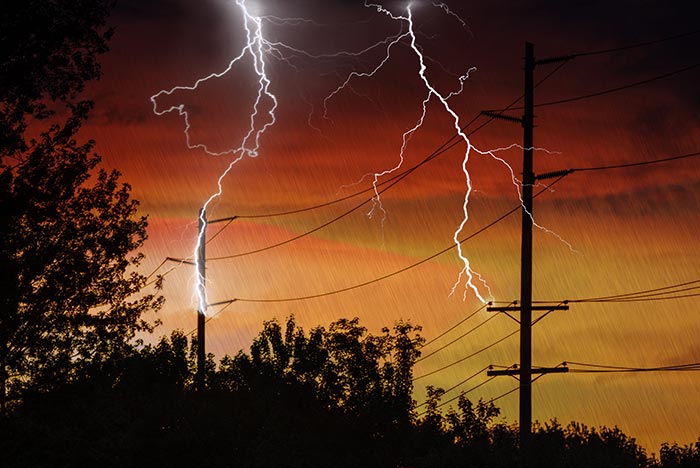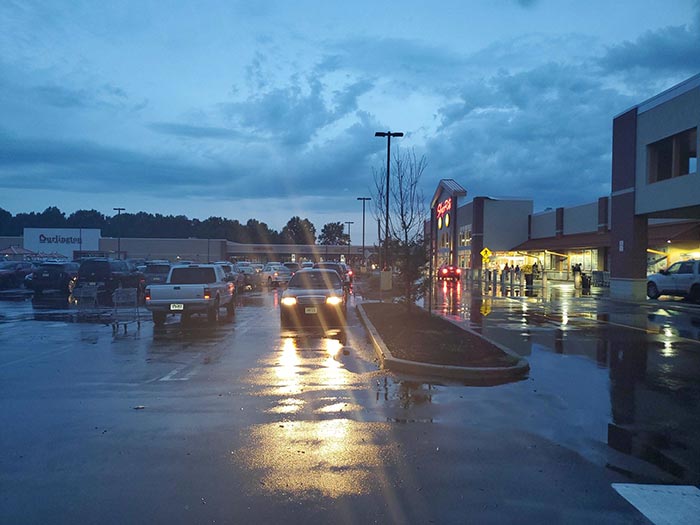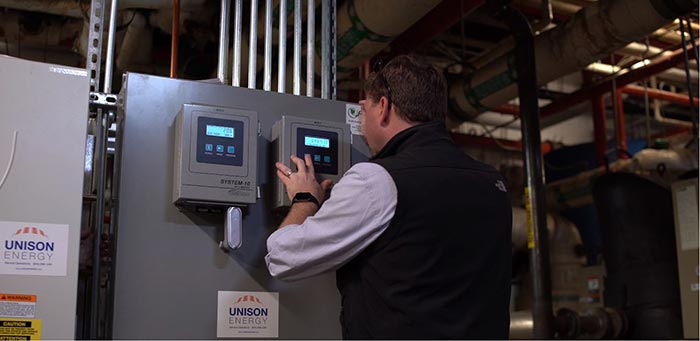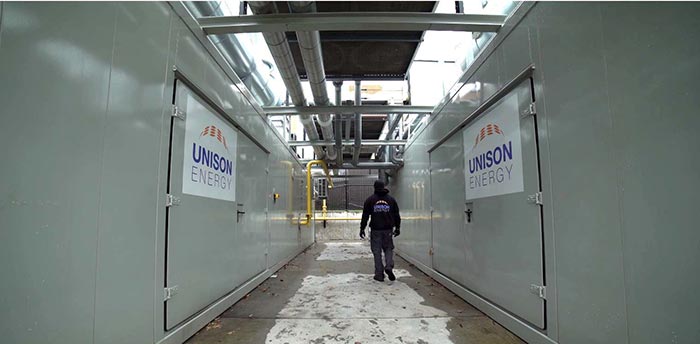Case Study – As Outages Hit the U.S., Microgrids Live Up to the Hype

As a rash of weather-related outages hit coast to coast, microgrids — and the operational teams behind them — are proving their worth.
The latter half of 2020 has been marked by dramatic weather from coast to coast, exposing some alarming holes in our nation’s energy resilience. One of the year’s worst storms, Tropical Storm Isaias, leftover three million residents and businesses on the East Coast without power, some for over a week. Subsequent storms in the Midwest and the Gulf Coast left millions without power again. Meanwhile, wildfires on the West Coast caused rolling blackouts and PSPS shutdowns.
Microgrids are often discussed as a resilient solution to power outages. But are microgrids able to perform during critical periods, when real disasters hit?
The Critical Need for Microgrids
A recent case study shows why microgrids are so effective — and necessary. On August 21, Tropical Storm Isaias roared up the East Coast. Unison Energy had 13 systems in the path of the storm, operating normally in parallel with the utility and providing baseload power to hospitals, hotel/convention centers, and supermarkets.
The evening of August 21st, the first site in southern New Jersey went into island mode. The microgrid separated from the utility when its controls detected a loss of utility power and automatically opened the main breaker. The on-site natural gas generators continued to run and provided 100% of the facility’s load. As the day wore on, eight sites experienced the same sequence of events, one after another, moving up through New Jersey to New York and out on Long Island.
The next morning, after the storm dissipated, utility power was restored at the first of the sites and the microgrid closed the breaker to return to grid parallel mode. Over the next few days, several of the sites transitioned to grid parallel mode but had to return to island mode multiple times as utility repairs continued to cause instability or additional outages. It wasn’t until six days later that the last site was able to return to island mode.
That site, an 80,000 square-foot supermarket, would have lost over a million dollars of products and untold hours throwing out spoiled milk, eggs, meat, and ice cream if the microgrid hadn’t been able to provide power during the first 24 hours. Those six days were a boon to the surrounding community that, without power, was in desperate need of fresh food and water.

Experienced Providers Ensure Microgrid Success

Unison Energy’s experience in operating a fleet of microgrids during Isaias and other utility outages has shown that there are four keys to a successful event:
1. Design
Successful microgrids are heavily dependent on well-designed systems. The eight sites above were all designed with SEL relays that detected grid instability within 10 cycles or 160 milliseconds. With natural gas engines operating prior to the storm, the relays detected voltage imbalances, triggered the main utility breaker to open, and automatically islanded the sites from the utility grid. The microgrid controls had been configured to transition seamlessly to island mode without the engines shutting down. The controllers started the automated load-shed/load-add sequence to power first the emergency and priority loads. After the initial steps, the controllers brought online additional loads that are less time-sensitive, such as refrigeration. These load-shed/load-add steps had been well-calibrated and tested under all conditions (e.g. hot weather) to ensure that the proper loads were sequenced and didn’t overwhelm the engines’ ramp capabilities.
2. Service Team
Microgrid success also depends on the service team behind the technology. What you don’t typically hear in the conversation is that microgrids are not a “set it and forget it” technology. They require attention. As storms or PSPS shutdowns approach, the Unison Energy team deploys to be near the sites. The team prepares for the event by fixing any small issues, stocking parts, and preparing the sites.
Outages are a messy event for the grid. Dropped phases, voltage imbalances, and current spikes can all cause damage to motors or sensitive equipment in facilities. They can also cause microgrids to blow fuses or trip offline preemptively. Having a well-trained team with the right tools nearby can make an enormous difference. Unison Energy has learned over time to make sure that its team is equipped with 4WD trucks and not service vans (which are bad in snow & high winds), extra fuses for every size on the system, spare batteries and chargers, and a myriad of other small details that make the difference.
3. Remote Monitoring and Restart Capability
Most competent microgrid providers have some remote monitoring ability. It’s critical to be able to remotely restart systems and, when possible, isolate preemptively from the utility. As noted above, outages are messy. Experience has shown that preemptively taking sites into island mode makes for a smoother operation, rather than waiting for the utility to have an outage with the associated grid instability. Being able to remotely shift into island mode or restart equipment shut down by grid instability allows the team to stay off the roads unless needed, which is both safer for the team and leads to faster response times for our clients.

4. Testing, Practice, & Experience
Preparing for outages comes long before the storm, rolling blackout, or PSPS event occurs. The only way to prepare is to practice for island mode events in controlled environments. Too often microgrids are tested at commissioning and then never again. The best practice in the industry is to fully test island mode twice per year with the service and facilities teams. During these simulations, it’s important to discuss the playbook and procedures emphasizing safety — which is easy to forget during an outage in the midst of a storm. The team then opens the utility breaker and goes through the steps to enter island mode.
That said, nothing beats actual experience during a storm or unplanned utility outage. An experienced team that has tested the system, practiced for the event, and followed procedures for stocking parts and responding will be more successful.
The Case for Microgrids
As facilities turn to microgrids to provide needed resiliency for their sites, and as state agencies look to policies supporting those implementations, case studies of successful microgrids during storm outages provide important evidence that these deployments offer real resiliency, even during disasters. As an experienced and successful microgrid provider, Unison Energy is equipped to design, build, and operate a system that will keep your facility powered, even when extreme weather events take down the grid.
To learn more about how a Unison Energy microgrid can provide resilient power for your facility, click here to contact a Unison Energy sales representative
Energy insights, delivered
Subscribe for more content.
